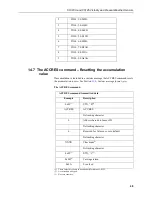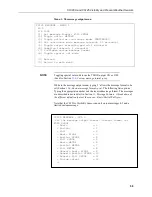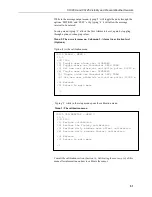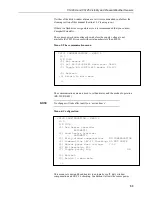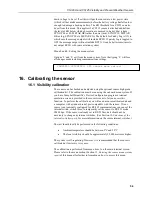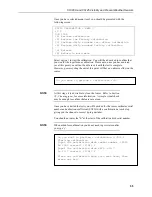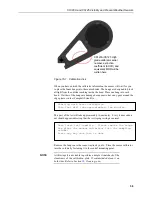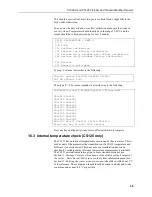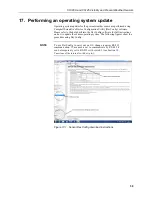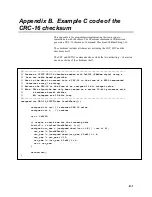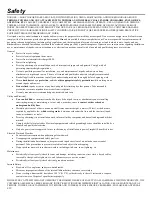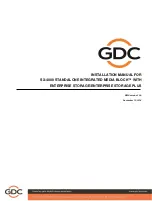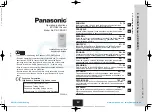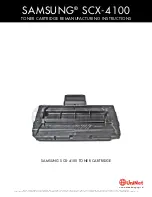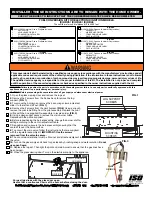
CS120A and CS125 Visibility and Present Weather Sensors
62
next metal tray above the bags. If placed in a radiating exposed infra-red
element type oven, shield the bags from direct exposure to the heating
element, giving the closest bags a minimum of 40 cm clearance from the
heat shield. Excessive surface film temperature due to infra-red radiation
will cause the Tyvek material to melt and/or the seals to fail. Seal failure
may also occur if the temperature is allowed to increase rapidly. This is
due to the fact that the water vapour is not given sufficient time to diffuse
through the Tyvek material, thus creating internal pressure within the bag,
resulting in a seal rupture. Temperature should not increase faster than
0.1°C to 0.3°C per minute.
3.
Set the temperature of the oven to 118°C, and allow the bags of desiccant
to reach equilibrium temperature.
Tyvek has a melting temperature of 121°C - 127°C.
(NON MIL-D-3464E activation or reactivation of both silica gel and
Bentonite clay can be achieved at temperatures of 104°C).
4.
Desiccant bags should be allowed to remain in the oven at the assigned
temperature for 24 hours. At the end of this period, the bags should be
immediately removed and placed in a desiccators jar or dry (0% relative
humidity) air tight container for cooling. If this procedure is not followed
precisely, any water vapour driven off during reactivation may be re-
adsorbed during cooling and/or handling.
5.
After the bags of desiccant have been allowed to cool in an airtight
desiccator, they may be removed and placed in either an appropriate type
polyliner tightly sealed to prevent moisture adsorption, or a container that
prevents moisture from coming into contact with the regenerated
desiccant. Some care should be taken when re-activating desiccant bags. If
heated in an oven which is too hot, the bags may burst. If in any doubt, we
recommend purchasing new desiccant packs instead of oven drying.
Failure to use or exchange the desiccant may lead to condensation inside
the enclosure. Not only will this lead to corrupted data but, in the long
term, can also cause corrosion which is expensive to repair.
CAUTION

